【SpringBoot整合系列】SpringBoot整合RabbitMQ-基本使用
目录
- SpringtBoot整合RabbitMQ
- 1.依赖
- 2.配置
- RabbitMQ的7种模式
- 1.简单模式(Hello World)
- 应用场景
- 代码示例
- 2.工作队列模式(Work queues)
- 应用场景
- 代码示例
- 手动 ack
- 代码示例
- 3.订阅模式(Publish/Subscribe)
- 应用场景
- 代码示例
- 4.路由模式(Routing)
- 应用场景
- 代码示例
- 5.主题模式(Topics)
- 应用场景
- 代码示例
- 6.远程过程调用(RPC)
- 应用场景
- 代码示例
- 消息生产者开发
- 消息发送者开发
- 7.发布者确认(Publisher Confirms)
- 应用场景
- RabbitMQ的四种交换机
- 1.直连交换机(Direct exchange)
- 代码示例
- 2.扇形交换机(Fanout exchange)
- 代码示例
- 3.主题交换机(Topic exchange)
- 代码示例
- 4.首部交换机(Headers exchange)
- 代码示例
SpringtBoot整合RabbitMQ
1.依赖
<dependency><groupId>org.springframework.boot</groupId><artifactId>spring-boot-starter-amqp</artifactId></dependency><dependency><groupId>org.springframework.boot</groupId><artifactId>spring-boot-starter-web</artifactId></dependency><dependency><groupId>org.projectlombok</groupId><artifactId>lombok</artifactId><optional>true</optional></dependency><dependency><groupId>org.springframework.boot</groupId><artifactId>spring-boot-starter-test</artifactId><scope>test</scope></dependency><dependency><groupId>org.springframework.amqp</groupId><artifactId>spring-rabbit-test</artifactId><scope>test</scope></dependency>
2.配置
server:port: 9090
spring:rabbitmq:host: 192.168.29.200port: 5672username: adminpassword: adminvirtual-host: /
RabbitMQ的7种模式
1.简单模式(Hello World)

- 做最简单的事情,一个生产者对应一个消费者,RabbitMQ相当于一个消息代理,负责将A的消息转发给B
应用场景
- 将发送的电子邮件放到消息队列,然后邮件服务在队列中获取邮件并发送给收件人
代码示例
- 配置类
@Configuration public class HelloWorldConfig {public static final String HELLO_WORLD_QUEUE_NAME = "hello_world_queue";@Beanpublic Queue queue1() {return new Queue(HELLO_WORLD_QUEUE_NAME);} } - 监听并消费消息
@Component public class HelloWorldConsumer {@RabbitListener(queues = HelloWorldConfig.HELLO_WORLD_QUEUE_NAME)public void receive(String msg) {System.out.println("msg = " + msg);} } - 生产消息并发送
@SpringBootTest class MyMqBootApplicationTests {@ResourceRabbitTemplate rabbitTemplate;@Testvoid helloworld() {rabbitTemplate.convertAndSend(HelloWorldConfig.HELLO_WORLD_QUEUE_NAME, "hello world!!!");} }
2.工作队列模式(Work queues)
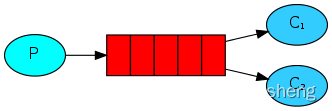
- 在多个消费者之间分配任务(竞争的消费者模式),一个生产者对应多个消费者,一般适用于执行资源密集型任务,单个消费者处理不过来,需要多个消费者进行处理
- 一个队列对应了多个消费者,默认情况下,由队列对消息进行平均分配,消息会被分到不同的消费者手中。消费者可以配置各自的并发能力,进而提高消息的消费能力,也可以配置手动 ack,来决定是否要消费某一条消息。
应用场景
- 一个订单的处理需要10s,有多个订单可以同时放到消息队列,然后让多个消费者同时处理,这样就是并行了,而不是单个消费者的串行情况
代码示例
-
监听并消费消息
@Component public class HelloWorldConsumer {@RabbitListener(queues = HelloWorldConfig.HELLO_WORLD_QUEUE_NAME)public void receive(String msg) {System.out.println("receive = " + msg);}// concurrency 为 10,此时,receive2将会同时存在 10 个子线程去消费消息@RabbitListener(queues = HelloWorldConfig.HELLO_WORLD_QUEUE_NAME,concurrency = "10")public void receive2(String msg) {System.out.println("receive2 = " + msg+"------->"+Thread.currentThread().getName());} } -
生产消息并发送
@Testvoid work() {for (int i = 0; i < 10; i++) {rabbitTemplate.convertAndSend(HelloWorldConfig.HELLO_WORLD_QUEUE_NAME, "hello");}} -
运行结果:运行结果每次不一定一样
receive2 = hello------->org.springframework.amqp.rabbit.RabbitListenerEndpointContainer#1-9 receive2 = hello------->org.springframework.amqp.rabbit.RabbitListenerEndpointContainer#1-10 receive2 = hello------->org.springframework.amqp.rabbit.RabbitListenerEndpointContainer#1-1 receive2 = hello------->org.springframework.amqp.rabbit.RabbitListenerEndpointContainer#1-3 receive2 = hello------->org.springframework.amqp.rabbit.RabbitListenerEndpointContainer#1-7 receive2 = hello------->org.springframework.amqp.rabbit.RabbitListenerEndpointContainer#1-5 receive = hello receive2 = hello------->org.springframework.amqp.rabbit.RabbitListenerEndpointContainer#1-4 receive2 = hello------->org.springframework.amqp.rabbit.RabbitListenerEndpointContainer#1-6 receive2 = hello------->org.springframework.amqp.rabbit.RabbitListenerEndpointContainer#1-8
手动 ack
手动 ack可以自行决定是否消费 RabbitMQ 发来的消息
代码示例
- 配置文件:配置手动ack
server:port: 9090
spring:rabbitmq:host: 192.168.29.200port: 5672username: adminpassword: adminvirtual-host: /listener:simple:acknowledge-mode: manual # 配置手动ack
- 消费代码:receive2 拒绝了所有消息,第一个消费者消费了所有消息
@Component public class HelloWorldConsumer {@RabbitListener(queues = HelloWorldConfig.HELLO_WORLD_QUEUE_NAME)public void receive(Message message, Channel channel) throws IOException {System.out.println("receive="+message.getPayload());//手动确认channel.basicAck(((Long) message.getHeaders().get(AmqpHeaders.DELIVERY_TAG)),true);}@RabbitListener(queues = HelloWorldConfig.HELLO_WORLD_QUEUE_NAME, concurrency = "10")public void receive2(Message message, Channel channel) throws IOException {System.out.println("receive2 = " + message.getPayload() + "------->" + Thread.currentThread().getName());//手动拒绝channel.basicReject(((Long) message.getHeaders().get(AmqpHeaders.DELIVERY_TAG)), true);} } - 测试结果(生产代码不变)
- 此时receive2 拒绝了所有消息,receive消费了所有消息(如果receive2没有拒绝,receive断然不会消费10次)
3.订阅模式(Publish/Subscribe)
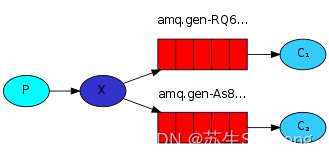
- 一次向许多消费者发送消息,一个生产者发送的消息会被多个消费者获取,也就是将消息将广播到所有的消费者中。
- 一个生产者,多个消费者,每一个消费者都有自己的一个队列,生产者没有将消息直接发送到队列,而是发送到了交换机,每个队列绑定交换机,生产者发送的消息经过交换机,到达队列,实现一个消息被多个消费者获取的目的。
- 需要注意的是,如果将消息发送到一个没有队列绑定的 Exchange上面,那么该消息将会丢失,这是因为在 RabbitMQ 中 Exchange 不具备存储消息的能力,只有队列具备存储消息的能力
应用场景
- 更新商品库存后需要通知多个缓存和多个数据库,这里的结构应该是:
- 一个fanout类型交换机扇出两个个消息队列,分别为缓存消息队列、数据库消息队列
- 一个缓存消息队列对应着多个缓存消费者
- 一个数据库消息队列对应着多个数据库消费者
代码示例
具体内容看本文单独的目录 RabbitMQ的四种交换机 , 我这里单独拿出来解释了
4.路由模式(Routing)
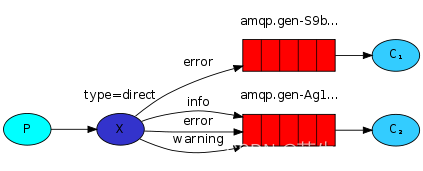
- 有选择地(Routing key)接收消息,发送消息到交换机并且要指定路由key ,消费者将队列绑定到交换机时需要指定路由key,仅消费指定路由key的消息
- 一个生产者,一个交换机,两个队列,两个消费者,生产者在创建 Exchange 后,根据 RoutingKey 去绑定相应的队列,并且在发送消息时,指定消息的具体 RoutingKey 即可
应用场景
- 如在商品库存中增加了1台iphone12,iphone12促销活动消费者指定routing key为iphone12,只有此促销活动会接收到消息,其它促销活动不关心也不会消费此routing key的消息
代码示例
参考本文单独的目录 RabbitMQ的四种交换机-1
5.主题模式(Topics)
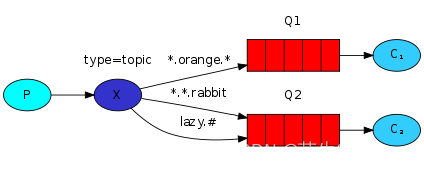
- 根据主题(Topics)来接收消息,将路由key和某模式进行匹配,此时队列需要绑定在一个模式上,#匹配一个词或多个词,*只匹配一个词。
- 一个生产者,一个交换机,两个队列,两个消费者,生产者创建 Topic 的 Exchange 并且绑定到队列中,这次绑定可以通过 * 和 # 关键字,对指定 RoutingKey 内容,编写时注意格式 xxx.xxx.xxx 去编写
应用场景
同上,iphone促销活动可以接收主题为iphone的消息,如iphone12、iphone13,iphone…等
代码示例
参考本文单独的目录 RabbitMQ的四种交换机-3
6.远程过程调用(RPC)
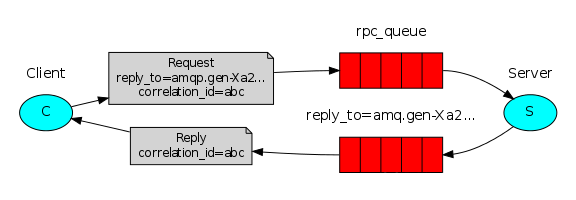
如果我们需要在远程计算机上运行功能并等待结果就可以使用RPC,具体流程可以看图。
- 首先 Client 发送一条消息,和普通的消息相比,这条消息多了两个关键内容:一个是 correlation_id,这个表示这条消息的唯一 id,还有一个内容是 reply_to,这个表示消息回复队列的名字。
- Server 从消息发送队列获取消息并处理相应的业务逻辑,处理完成后,将处理结果发送到 reply_to 指定的回调队列中。
- Client 从回调队列中读取消息,就可以知道消息的执行情况是什么样子了。
这种情况其实非常适合处理异步调用。
应用场景
- 需要等待接口返回数据,如订单支付
代码示例
消息生产者开发
-
依赖
<dependency><groupId>org.springframework.boot</groupId><artifactId>spring-boot-starter-amqp</artifactId></dependency><dependency><groupId>org.springframework.boot</groupId><artifactId>spring-boot-starter-web</artifactId></dependency><dependency><groupId>org.springframework.boot</groupId><artifactId>spring-boot-starter-test</artifactId><scope>test</scope></dependency><dependency><groupId>org.springframework.amqp</groupId><artifactId>spring-rabbit-test</artifactId><scope>test</scope></dependency><dependency><groupId>org.projectlombok</groupId><artifactId>lombok</artifactId><optional>true</optional></dependency> -
配置
server:port: 7777 spring:rabbitmq:host: 192.168.29.200port: 5672username: adminpassword: adminvirtual-host: /publisher-confirm-type: correlated # 配置消息确认方式,我们通过 correlated 来确认,只有开启了这个配置,将来的消息中才会带 correlation_id,只有通过 correlation_id 我们才能将发送的消息和返回值之间关联起来。publisher-returns: true #开启发送失败退回。 -
配置类
-
/*** @author: zjl* @datetime: 2024/5/9* @desc: * 这个配置类中我们分别配置了消息发送队列 msgQueue 和消息返回队列 replyQueue,* 然后将这两个队列和消息交换机进行绑定。常规操作。* 在 Spring Boot 中我们负责消息发送的工具是 RabbitTemplate,* 默认情况下,系统自动提供了该工具,但是这里我们需要对该工具重新进行定制,* 主要是添加消息发送的返回队列,最后我们还需要给返回队列设置一个监听器*/ @Configuration public class RabbitConfig {public static final String RPC_QUEUE1 = "queue_1";public static final String RPC_QUEUE2 = "queue_2";public static final String RPC_EXCHANGE = "rpc_exchange";/*** 设置消息发送RPC队列*/@Beanpublic Queue msgQueue() {return new Queue(RPC_QUEUE1);}/*** 设置返回队列*/@Beanpublic Queue replyQueue() {return new Queue(RPC_QUEUE2);}/*** 设置交换机*/@Beanpublic TopicExchange exchange() {return new TopicExchange(RPC_EXCHANGE);}/*** 请求队列和交换器绑定*/@Beanpublic Binding msgBinding() {return BindingBuilder.bind(msgQueue()).to(exchange()).with(RPC_QUEUE1);}/*** 返回队列和交换器绑定*/@Beanpublic Binding replyBinding() {return BindingBuilder.bind(replyQueue()).to(exchange()).with(RPC_QUEUE2);}/*** 使用 RabbitTemplate发送和接收消息* 并设置回调队列地址*/@Beanpublic RabbitTemplate rabbitTemplate(ConnectionFactory connectionFactory) {RabbitTemplate template = new RabbitTemplate(connectionFactory);template.setReplyAddress(RPC_QUEUE2);template.setReplyTimeout(6000);return template;}/*** 给返回队列设置监听器*/@Beanpublic SimpleMessageListenerContainer replyContainer(ConnectionFactory connectionFactory) {SimpleMessageListenerContainer container = new SimpleMessageListenerContainer();container.setConnectionFactory(connectionFactory);container.setQueueNames(RPC_QUEUE2);container.setMessageListener(rabbitTemplate(connectionFactory));return container;} } -
消息发送
/*** @author: zjl* @datetime: 2024/5/9* @desc:* 消息发送调用 sendAndReceive 方法,该方法自带返回值,返回值就是服务端返回的消息。* 服务端返回的消息中,头信息中包含了 spring_returned_message_correlation 字段,* 这个就是消息发送时候的 correlation_id,通过消息发送时候的 correlation_id* 以及返回消息头中的 spring_returned_message_correlation 字段值,* 我们就可以将返回的消息内容和发送的消息绑定到一起,* 确认出这个返回的内容就是针对这个发送的消息的。*/ @RestController @Slf4j public class RpcClientController {@Resourceprivate RabbitTemplate rabbitTemplate;@GetMapping("/send")public String send(String message) {// 创建消息对象Message newMessage = MessageBuilder.withBody(message.getBytes()).build();log.info("client send:{}", newMessage);//客户端发送消息Message result = rabbitTemplate.sendAndReceive(RabbitConfig.RPC_EXCHANGE, RabbitConfig.RPC_QUEUE1, newMessage);String response = "";if (result != null) {// 获取已发送的消息的 correlationIdString correlationId = newMessage.getMessageProperties().getCorrelationId();log.info("correlationId:{}", correlationId);// 获取响应头信息HashMap<String, Object> headers = (HashMap<String, Object>) result.getMessageProperties().getHeaders();// 获取 server 返回的消息 idString msgId = (String) headers.get("spring_returned_message_correlation");if (msgId.equals(correlationId)) {response = new String(result.getBody());log.info("client receive:{}", response);}}return response;} }
这就是整个消息生产者的开发,其实最最核心的就是 sendAndReceive 方法的调用。调用虽然简单,但是准备工作还是要做足够。例如如果我们没有在 application.properties 中配置 correlated,发送的消息中就没有 correlation_id,这样就无法将返回的消息内容和发送的消息内容关联起来
消息发送者开发
-
依赖
<dependency><groupId>org.springframework.boot</groupId><artifactId>spring-boot-starter-amqp</artifactId></dependency><dependency><groupId>org.springframework.boot</groupId><artifactId>spring-boot-starter-web</artifactId></dependency><dependency><groupId>org.springframework.boot</groupId><artifactId>spring-boot-starter-test</artifactId><scope>test</scope></dependency><dependency><groupId>org.springframework.amqp</groupId><artifactId>spring-rabbit-test</artifactId><scope>test</scope></dependency><dependency><groupId>org.projectlombok</groupId><artifactId>lombok</artifactId><optional>true</optional></dependency> -
配置
server:port: 8888 spring:rabbitmq:host: 192.168.29.200port: 5672username: adminpassword: adminvirtual-host: /publisher-confirm-type: correlated # 配置消息确认方式,我们通过 correlated 来确认,只有开启了这个配置,将来的消息中才会带 correlation_id,只有通过 correlation_id 我们才能将发送的消息和返回值之间关联起来。publisher-returns: true #开启发送失败退回。 -
配置类
@Configuration public class RabbitConfig {public static final String RPC_QUEUE1 = "queue_1";public static final String RPC_QUEUE2 = "queue_2";public static final String RPC_EXCHANGE = "rpc_exchange";/*** 配置消息发送队列*/@BeanQueue msgQueue() {return new Queue(RPC_QUEUE1);}/*** 设置返回队列*/@BeanQueue replyQueue() {return new Queue(RPC_QUEUE2);}/*** 设置交换机*/@BeanTopicExchange exchange() {return new TopicExchange(RPC_EXCHANGE);}/*** 请求队列和交换器绑定*/@BeanBinding msgBinding() {return BindingBuilder.bind(msgQueue()).to(exchange()).with(RPC_QUEUE1);}/*** 返回队列和交换器绑定*/@BeanBinding replyBinding() {return BindingBuilder.bind(replyQueue()).to(exchange()).with(RPC_QUEUE2);} } -
消息消费
@RestController @Slf4j public class RpcConsumerReceiver {/** 服务端首先收到消息并打印出来。* 服务端提取出原消息中的 correlation_id。* 服务端调用 sendAndReceive 方法,将消息发送给 RPC_QUEUE2 队列,同时带上 correlation_id 参数。*/@Resourceprivate RabbitTemplate rabbitTemplate;@RabbitListener(queues = RabbitConfig.RPC_QUEUE1)public void process(Message msg) {log.info("server receive : {}",msg.toString());Message response = MessageBuilder.withBody(("i'm receive:"+new String(msg.getBody())).getBytes()).build();CorrelationData correlationData = new CorrelationData(msg.getMessageProperties().getCorrelationId());rabbitTemplate.sendAndReceive(RabbitConfig.RPC_EXCHANGE, RabbitConfig.RPC_QUEUE2, response, correlationData);} }
7.发布者确认(Publisher Confirms)
- 与发布者进行可靠的发布确认,发布者确认是RabbitMQ扩展,可以实现可靠的发布。
- 在通道上启用发布者确认后,RabbitMQ将异步确认发送者发布的消息,这意味着它们已在服务器端处理
应用场景
- 对于消息可靠性要求较高,比如钱包扣款
RabbitMQ的四种交换机
1.直连交换机(Direct exchange)
- 具有路由功能的交换机,绑定到此交换机的时候需要指定一个routing_key,交换机发送消息的时候需要routing_key,会将消息发送道对应的队列
- DirectExchange 的路由策略是将消息队列绑定到一个 DirectExchange 上,当一条消息到达 DirectExchange 时会被转发到与该条消息 routing key 相同的 Queue 上
- 例如消息队列名为 “hello-queue”,则 routingkey 为 “hello-queue” 的消息会被该消息队列接收。
代码示例
- 配置类
@Configuration public class RabbitDirectConfig {//首先提供一个消息队列Queue,然后创建一个DirectExchange对象,三个参数分别是名字,重启后是否依然有效以及长期未用时是否删除。//创建一个Binding对象将Exchange和Queue绑定在一起。//DirectExchange和Binding两个Bean的配置可以省略掉,即如果使用DirectExchange,可以只配置一个Queue的实例即可。public final static String DIRECTNAME = "mq-direct";@Beanpublic Queue queue() {return new Queue("hello-queue");}@Beanpublic DirectExchange directExchange() {return new DirectExchange(DIRECTNAME, true, false);}@Beanpublic Binding binding() {return BindingBuilder.bind(queue()).to(directExchange()).with("direct");} } - 消费者
通过 @RabbitListener 注解指定一个方法是一个消息消费方法,方法参数就是所接收到的消息@Component public class DirectReceiver {@RabbitListener(queues = "hello-queue")public void handler1(String msg) {System.out.println("DirectReceiver:" + msg);} } - 生产者发送消息
@RestController public class SendController {@Resourceprivate RabbitTemplate rabbitTemplate;@RequestMapping("/send")public String send(){rabbitTemplate.convertAndSend("hello-queue", "hello direct!");return "success";} }
2.扇形交换机(Fanout exchange)
- 广播消息到所有队列,没有任何处理,速度最快
- FanoutExchange 的数据交换策略是把所有到达 FanoutExchange 的消息转发给所有与它绑定的 Queue 上,在这种策略中,routingkey 将不起任何作用
代码示例
-
配置类
@Configuration public class RabbitFanoutConfig {//在这里首先创建 FanoutExchange,参数含义与创建 DirectExchange 参数含义一致,// 然后创建两个 Queue,再将这两个 Queue 都绑定到 FanoutExchange 上public final static String FANOUTNAME = "mq-fanout";@Beanpublic FanoutExchange fanoutExchange() {return new FanoutExchange(FANOUTNAME, true, false);}@Beanpublic Queue queueOne() {return new Queue("queue-one");}@Beanpublic Queue queueTwo() {return new Queue("queue-two");}@Beanpublic Binding bindingOne() {return BindingBuilder.bind(queueOne()).to(fanoutExchange());}@Beanpublic Binding bindingTwo() {return BindingBuilder.bind(queueTwo()).to(fanoutExchange());} } -
消费者
@Component public class FanoutReceiver {@RabbitListener(queues = "queue-one")public void receiver1(String message) {System.out.println("FanoutReceiver:receiver1:" + message);}@RabbitListener(queues = "queue-two")public void receiver2(String message) {System.out.println("FanoutReceiver:receiver2:" + message);} } -
生产者发送消息
@RestController public class SendController {@Resourceprivate RabbitTemplate rabbitTemplate;@RequestMapping("/send")public String send(){//注意这里发送消息时不需要 routingkey,指定 exchange 即可,routingkey 可以直接传一个 nullrabbitTemplate.convertAndSend(RabbitFanoutConfig.FANOUTNAME,null, "hello fanout!");return "success";} }
3.主题交换机(Topic exchange)
- 在直连交换机基础上增加模式匹配,也就是对routing_key进行模式匹配,*代表一个单词,#代表多个单词
- TopicExchange 是比较复杂但是也比较灵活的一种路由策略,在 TopicExchange 中,Queue 通过 routingkey 绑定到 TopicExchange 上,
- 当消息到达 TopicExchange 后,TopicExchange 根据消息的 routingkey 将消息路由到一个或者多个 Queue 上
代码示例
-
配置类
@Configuration public class RabbitTopicConfig {/*** 首先创建 TopicExchange,参数和前面的一致。* 然后创建三个 Queue,第一个 Queue 用来存储和 “xiaomi” 有关的消息,* 第二个 Queue 用来存储和 “huawei” 有关的消息,* 第三个 Queue 用来存储和 “phone” 有关的消息。* * 将三个 Queue 分别绑定到 TopicExchange 上,* 第一个 Binding 中的 “xiaomi.#” 表示消息的 routingkey 凡是以 “xiaomi” 开头的,都将被路由到名称为 “xiaomi” 的 Queue 上,* 第二个 Binding 中的 “huawei.#” 表示消息的 routingkey 凡是以 “huawei” 开头的,都将被路由到名称为 “huawei” 的 Queue 上,* 第三个 Binding 中的 “#.phone.#” 则表示消息的 routingkey 中凡是包含 “phone” 的,都将被路由到名称为 “phone” 的 Queue 上。*/public final static String TOPICNAME = "mq-topic";@Beanpublic TopicExchange topicExchange() {return new TopicExchange(TOPICNAME, true, false);}@Beanpublic Queue xiaomi() {return new Queue("xiaomi");}@Beanpublic Queue huawei() {return new Queue("huawei");}@Beanpublic Queue phone() {return new Queue("phone");}@Beanpublic Binding xiaomiBinding() {return BindingBuilder.bind(xiaomi()).to(topicExchange()).with("xiaomi.#");}@Beanpublic Binding huaweiBinding() {return BindingBuilder.bind(huawei()).to(topicExchange()).with("huawei.#");}@Beanpublic Binding phoneBinding() {return BindingBuilder.bind(phone()).to(topicExchange()).with("#.phone.#");} } -
消费者
@Component public class TopicReceiver {@RabbitListener(queues = "phone")public void receiver1(String message) {System.out.println("PhoneReceiver:" + message);}@RabbitListener(queues = "xiaomi")public void receiver2(String message) {System.out.println("XiaoMiReceiver:"+message);}@RabbitListener(queues = "huawei")public void receiver3(String message) {System.out.println("HuaWeiReceiver:"+message);} } -
生产者发送消息
@RestController
public class SendController {@Resourceprivate RabbitTemplate rabbitTemplate;@RequestMapping("/send")public String send(){//根据 RabbitTopicConfig 中的配置,//第一条消息将被路由到名称为 “xiaomi” 的 Queue 上,//第二条消息将被路由到名为 “huawei” 的 Queue 上,//第三条消息将被路由到名为 “xiaomi” 以及名为 “phone” 的 Queue 上,//第四条消息将被路由到名为 “huawei” 以及名为 “phone” 的 Queue 上,//最后一条消息则将被路由到名为 “phone” 的 Queue 上rabbitTemplate.convertAndSend(RabbitTopicConfig.TOPICNAME,"xiaomi.news","小米新闻..");rabbitTemplate.convertAndSend(RabbitTopicConfig.TOPICNAME,"huawei.news","华为新闻..");rabbitTemplate.convertAndSend(RabbitTopicConfig.TOPICNAME,"xiaomi.phone","小米手机..");rabbitTemplate.convertAndSend(RabbitTopicConfig.TOPICNAME,"huawei.phone","华为手机..");rabbitTemplate.convertAndSend(RabbitTopicConfig.TOPICNAME,"phone.news","手机新闻..");return "success";}
}
4.首部交换机(Headers exchange)
- 忽略routing_key,使用Headers信息(一个Hash的数据结构)进行匹配,优势在于可以有更多更灵活的匹配规则
- HeadersExchange 是一种使用较少的路由策略,HeadersExchange 会根据消息的 Header 将消息路由到不同的 Queue 上,这种策略也和 routingkey无关
代码示例
-
配置类
@Configuration public class RabbitHeaderConfig {/*** 这里的配置大部分和前面介绍的一样,差别主要体现的 Binding 的配置上,* 第一个 bindingName 方法中,* whereAny 表示消息的 Header 中只要有一个 Header 匹配上 map 中的 key/value,* 就把该消息路由到名为 “name-queue” 的 Queue 上,* 这里也可以使用 whereAll 方法,* 表示消息的所有 Header 都要匹配。* whereAny 和 whereAll 实际上对应了一个名为 x-match 的属性。* bindingAge 中的配置则表示只要消息的 Header 中包含 age,不管 age 的值是多少,* 都将消息路由到名为 “age-queue” 的 Queue 上*/public final static String HEADERNAME = "mq-header";@Beanpublic HeadersExchange headersExchange() {return new HeadersExchange(HEADERNAME, true, false);}@Beanpublic Queue queueName() {return new Queue("name-queue");}@Beanpublic Queue queueAge() {return new Queue("age-queue");}@Beanpublic Binding bindingName() {Map<String, Object> map = new HashMap<>();map.put("name", "mq");return BindingBuilder.bind(queueName()).to(headersExchange()).whereAny(map).match();}@Beanpublic Binding bindingAge() {return BindingBuilder.bind(queueAge()).to(headersExchange()).where("age").exists();} } -
消费者
@Component public class HeaderReceiver {//注意这里的参数用 byte 数组接收@RabbitListener(queues = "name-queue")public void receiver1(byte[] msg) {System.out.println("HeaderReceiver:name:" + new String(msg, 0, msg.length));}@RabbitListener(queues = "age-queue")public void receiver2(byte[] msg) {System.out.println("HeaderReceiver:age:" + new String(msg, 0, msg.length));} } -
生产者发送消息
package cn.smbms.controller;import cn.smbms.config.RabbitFanoutConfig;
import org.springframework.amqp.core.Message;
import org.springframework.amqp.core.MessageBuilder;
import org.springframework.amqp.rabbit.core.RabbitTemplate;
import org.springframework.web.bind.annotation.RequestMapping;
import org.springframework.web.bind.annotation.RestController;import javax.annotation.Resource;/*** @author: zjl* @datetime: 2024/5/9* @desc: */
@RestController
public class SendController {@Resourceprivate RabbitTemplate rabbitTemplate;@RequestMapping("/send")public String send(){//这里创建两条消息,两条消息具有不同的 header,不同 header 的消息将被发到不同的 Queue 中去Message nameMsg = MessageBuilder.withBody("hello header! name-queue".getBytes()).setHeader("name", "sang").build();Message ageMsg = MessageBuilder.withBody("hello header! age-queue".getBytes()).setHeader("age", "99").build();rabbitTemplate.send(RabbitHeaderConfig.HEADERNAME, null, ageMsg);rabbitTemplate.send(RabbitHeaderConfig.HEADERNAME, null, nameMsg);return "success";}
}
相关文章:

【SpringBoot整合系列】SpringBoot整合RabbitMQ-基本使用
目录 SpringtBoot整合RabbitMQ1.依赖2.配置RabbitMQ的7种模式1.简单模式(Hello World)应用场景代码示例 2.工作队列模式(Work queues)应用场景代码示例手动 ack代码示例 3.订阅模式(Publish/Subscribe)应用…...

MySQL————创建存储过程函数
存储过程使用大纲 有参数传递 delimiter $$ 声明一个名称为get_student_introduce create procedure add_student_infor( in p_userName VARCHAR(20),in p_phone VARCHAR(11),in p_sex char(2),in p_introduce VARCHAR(255)) 开始操作 BEGIN 撰写真正在操作DMLDQL都行 INSE…...
——数据要素:管理核心框架)
数据赋能(86)——数据要素:管理核心框架
数据管理的核心框架是一个综合性的体系,旨在确保数据的有效利用、安全性以及合规性。这个框架主要包含了以下几个关键组成部分: 数据治理策略与目标:明确数据管理的整体战略和目标,包括数据价值的释放、数据资产地位的确定、多元…...
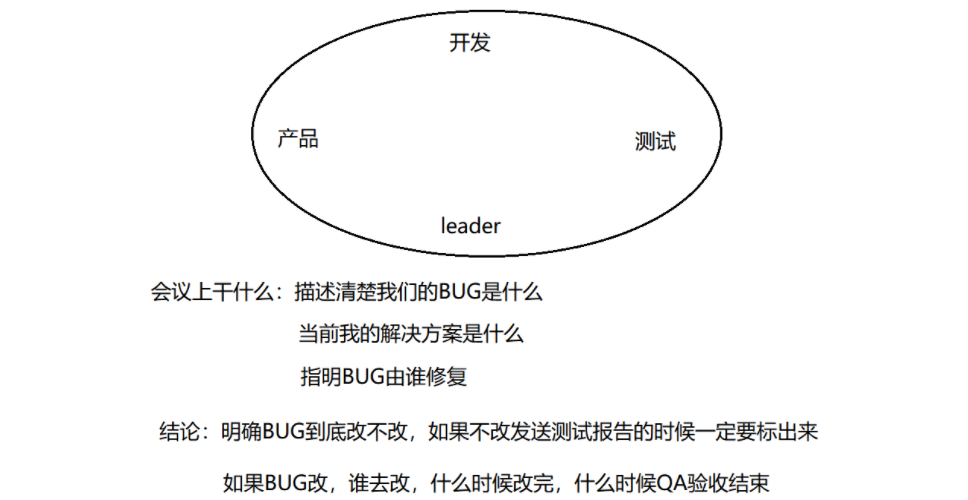
测试的基本概念
什么是软件测试 软件测试它就是一个过程测试就是对软件的全方位进行全面的校验.通过测试技术验证软件是不是符合用户的信息. 测试和开发的区别 在工作上的区别: 开发人员通过编程技能来开发和实现这个软件. 测试人员通过测试技能来验证软件是否符合用户需求. 在技术上的要求…...

Python多线程加速-休眠部分线程
总所周知Python由于GIL的问题,使用多线程时同一时刻只有一个线程在工作。故Python会在所有线程之间不断的切换,每切换到一个线程会执行一段字节码指令然后切换到另一个线程。如果开启了很多线程,且只有小部分线程在工作,如果不休眠…...
)
B+树(B+ Tree)
B树(B Tree)是一种对B树(B-Tree)的改进版本,它在数据库系统和文件系统中作为索引结构得到了广泛的应用,特别是在磁盘存储的场景下。B树保留了B树的基本特征,如自平衡、多路分支等,但…...
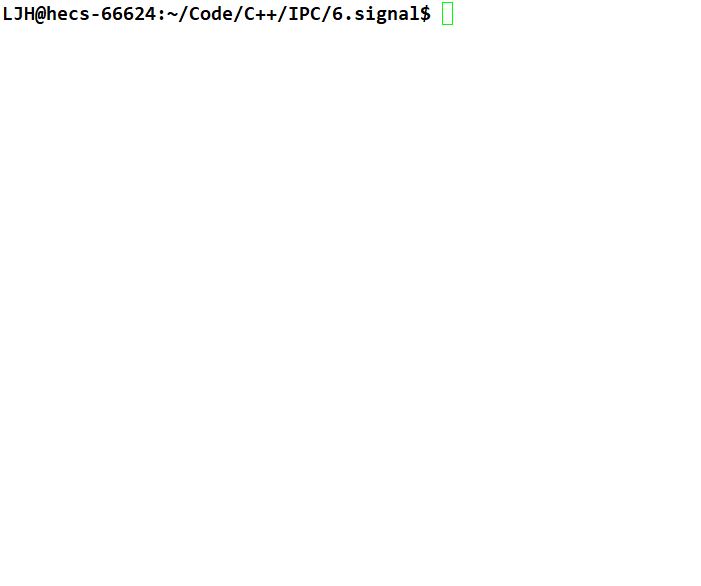
【Linux】了解信号产生的五种方式
文章目录 正文前的知识准备kill 命令查看信号man手册查看信号信号的处理方法 认识信号产生的5种方式1. 工具2. 键盘3. 系统调用kill 向任意进程发送任意信号raise 给调用方发送任意信号abort 给调用方发送SIGABRT信号 4. 软件条件5. 异常 正文前的知识准备 kill 命令查看信号 …...

【nuxt3国际化i18n】vue3+nuxt3+vite+TS国际化的正确做法
1、创建nuxt3请看Nuxt3官网 2、下面是添加i18n的叫教程,适用于企业前端项目。 添加依赖 依赖 yarn add vue-i18n yarn add nuxtjs/i18nnext -D配置文件nuxt.config.ts //nuxt.config.ts export default defineNuxtConfig({modules: [nuxtjs/i18n,],i18n: {stra…...
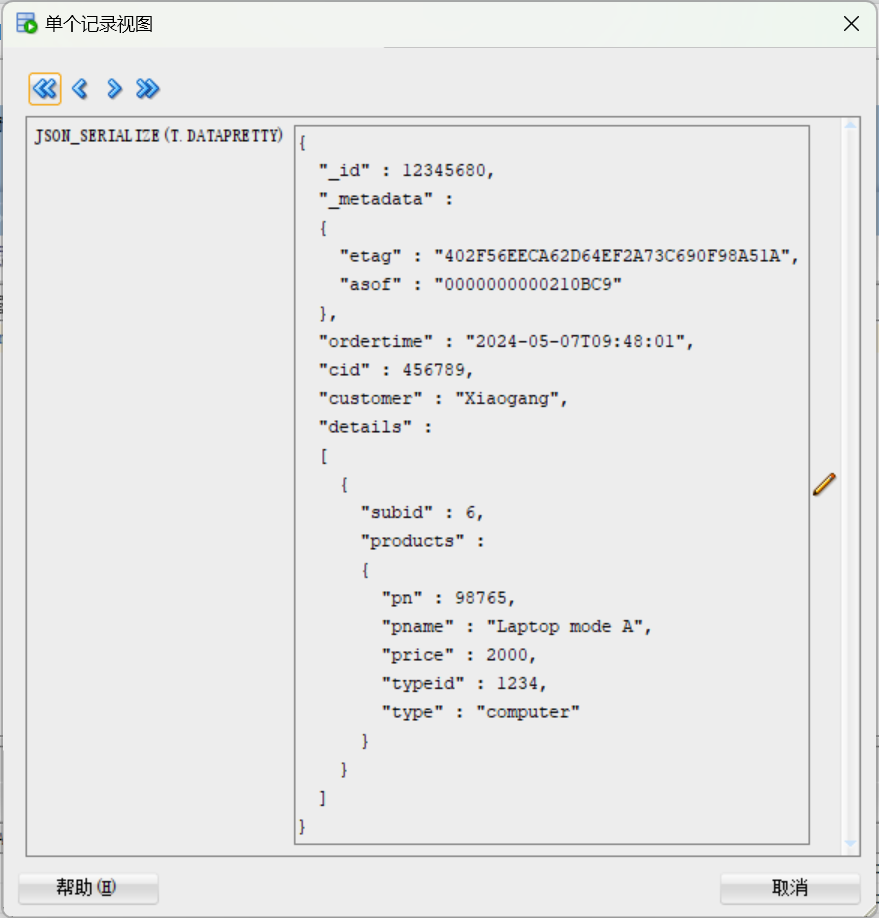
数据库管理-第185期 23ai:一套关系型数据干掉多套JSON存储(20240508)
数据库管理185期 2024-05-08 数据库管理-第185期 23ai:一套关系型数据干掉多套JSON存储(20240508)1 上期示例说明2 两个参数2.1 NEST/UNNEST2.2 CHECK/NOCHECK 3 一数多用3.1 以用户维度输出订单信息3.2 以产品维度3.3 以产品种类维度 4 美化输出总结 数…...

7 zip 介绍
7-Zip是一款广受好评的开源文件存档与压缩工具,支持高比率的压缩,适用于Windows、Linux和macOS等多种操作系统平台。以下是关于7-Zip的详细介绍: - **高压缩比**:7-Zip最显著的特点是其提供的高压缩率,尤其是使用其独…...

前端页面 贴边拖拽 盒子
vue 悬浮球(带自动吸附功能)_vue悬浮球-CSDN博客...

【408真题】2009-10
“接”是针对题目进行必要的分析,比较简略; “化”是对题目中所涉及到的知识点进行详细解释; “发”是对此题型的解题套路总结,并结合历年真题或者典型例题进行运用。 涉及到的知识全部来源于王道各科教材(2025版&…...

WebSocket概述
TCP和HTTP规范有连接超时一说,所以长轮询并不能一直持续,服务端和客户端的连接需要定期的连接和关闭再连接。 WebSocket在请求头中有一个Connection:Upgrade字段,表示客户端想对协议进行升级,还有一个Upgrade:websocket字段&…...

人机协同是虚拟与真实的协同
“人机协同”是指人类与机器之间的合作与协同工作。在这种协同中,机器可以作为助手、辅助或扩展人类的能力,帮助人们完成任务,提高工作效率和质量。 虚拟与真实的协同是指在人机协同的过程中,虚拟想象世界和真实世界之间的协同。通…...

【编程向导】Docker-常用命令
常用命令 管理命令 管理命令说明builder管理构建config管理配置container管理容器context管理上下文engine管理引擎image管理镜像network管理网络node管理 Swarm 节点plugin管理插件secret管理 Docker secretsservice管理服务stack管理 Docker stacksswarm管理 Swarm 集群sys…...

LeetCode题练习与总结:不同的二叉搜索树Ⅱ--95
一、题目描述 给你一个整数 n ,请你生成并返回所有由 n 个节点组成且节点值从 1 到 n 互不相同的不同 二叉搜索树 。可以按 任意顺序 返回答案。 示例 1: 输入:n 3 输出:[[1,null,2,null,3],[1,null,3,2],[2,1,3],[3,1,null,nul…...

idea SpringBoot + Gradle 环境配置到项目打包
一、前言 Gradle是一个基于Apache Ant和Apache Maven概念的项目自动化构建开源工具。它使用一种基于Groovy的特定领域语言(DSL)来声明项目设置,也增加了基于Kotlin语言的kotlin-based DSL,抛弃了基于XML的各种繁琐配置。 面向Java应用为主。当前其支持…...

深入理解tengine的sysguard模块
目录 1. 引言2. 开启sysguard模块2.1 编译2.2 配置3. 源码分析3.1 配置参数分析3.2 模块的初始化3.3 ngx_http_sysguard_handler函数3.4 各项负载指标的获取3.4.1 load系统负载的获取3.4.2 cpu使用率的获取3.4.3 内存使用情况的获取3.3.5 请求平均响应时间的获取1. 引言 Tengin…...

探索多模态LLM作为驾驶的世界模型
24年5月MIT的论文“Probing Multimodal LLMs as World Models for Driving”。 主要对多模态大语言模型(MLLM)在自动驾驶领域的应用进行了审视,并挑战/验证了一些常见的假设,重点关注它们通过图像/帧序列推理和解释在闭环控制环境…...

掌握Vim:Linux系统维护的瑞士军刀 - 常用命令深度解析
在Linux的世界里,Vim编辑器犹如一位沉默的剑客,它的命令就是那锋利的剑刃,能够在代码的海洋中劈波斩浪。对于每一位Linux系统用户来说,掌握Vim的常用命令,就如同获得了维护系统的瑞士军刀。今天,让我们一起…...
:手搓截屏和帧率控制)
Python|GIF 解析与构建(5):手搓截屏和帧率控制
目录 Python|GIF 解析与构建(5):手搓截屏和帧率控制 一、引言 二、技术实现:手搓截屏模块 2.1 核心原理 2.2 代码解析:ScreenshotData类 2.2.1 截图函数:capture_screen 三、技术实现&…...
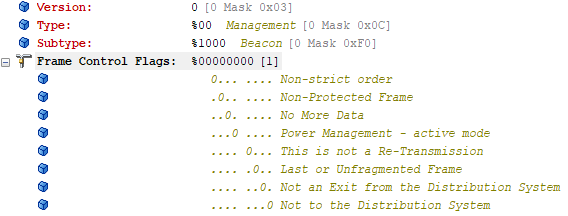
【WiFi帧结构】
文章目录 帧结构MAC头部管理帧 帧结构 Wi-Fi的帧分为三部分组成:MAC头部frame bodyFCS,其中MAC是固定格式的,frame body是可变长度。 MAC头部有frame control,duration,address1,address2,addre…...

《Qt C++ 与 OpenCV:解锁视频播放程序设计的奥秘》
引言:探索视频播放程序设计之旅 在当今数字化时代,多媒体应用已渗透到我们生活的方方面面,从日常的视频娱乐到专业的视频监控、视频会议系统,视频播放程序作为多媒体应用的核心组成部分,扮演着至关重要的角色。无论是在个人电脑、移动设备还是智能电视等平台上,用户都期望…...

边缘计算医疗风险自查APP开发方案
核心目标:在便携设备(智能手表/家用检测仪)部署轻量化疾病预测模型,实现低延迟、隐私安全的实时健康风险评估。 一、技术架构设计 #mermaid-svg-iuNaeeLK2YoFKfao {font-family:"trebuchet ms",verdana,arial,sans-serif;font-size:16px;fill:#333;}#mermaid-svg…...

QMC5883L的驱动
简介 本篇文章的代码已经上传到了github上面,开源代码 作为一个电子罗盘模块,我们可以通过I2C从中获取偏航角yaw,相对于六轴陀螺仪的yaw,qmc5883l几乎不会零飘并且成本较低。 参考资料 QMC5883L磁场传感器驱动 QMC5883L磁力计…...

基于Uniapp开发HarmonyOS 5.0旅游应用技术实践
一、技术选型背景 1.跨平台优势 Uniapp采用Vue.js框架,支持"一次开发,多端部署",可同步生成HarmonyOS、iOS、Android等多平台应用。 2.鸿蒙特性融合 HarmonyOS 5.0的分布式能力与原子化服务,为旅游应用带来…...
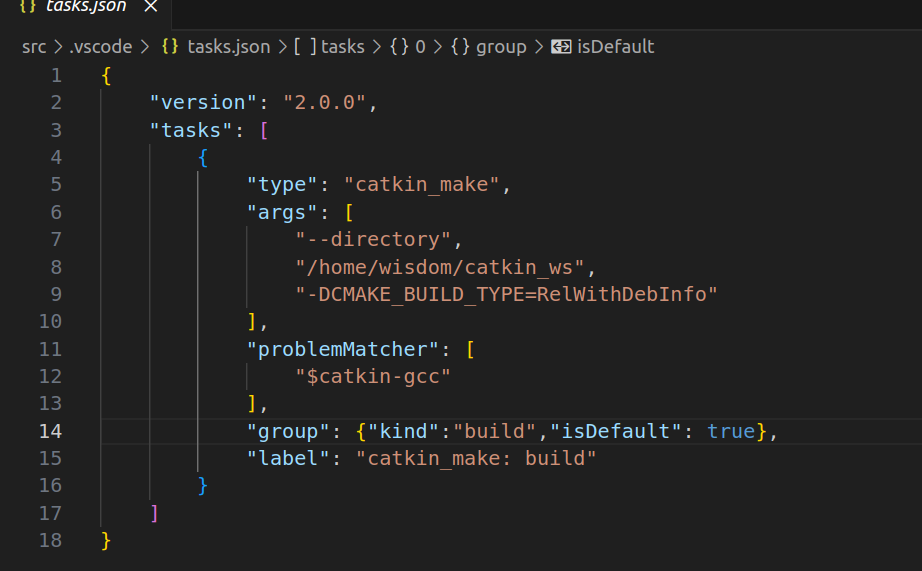
1.3 VSCode安装与环境配置
进入网址Visual Studio Code - Code Editing. Redefined下载.deb文件,然后打开终端,进入下载文件夹,键入命令 sudo dpkg -i code_1.100.3-1748872405_amd64.deb 在终端键入命令code即启动vscode 需要安装插件列表 1.Chinese简化 2.ros …...
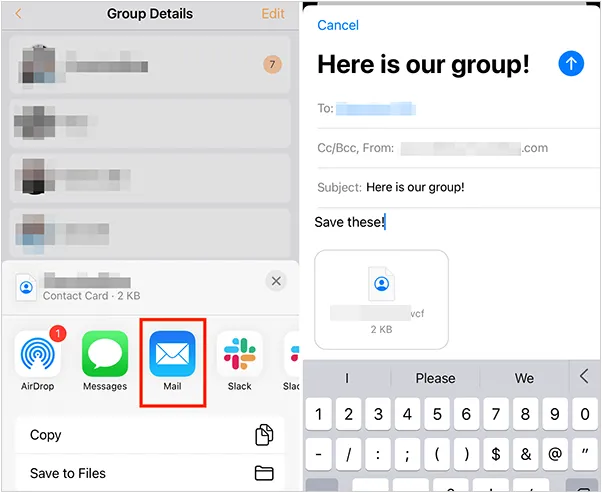
如何将联系人从 iPhone 转移到 Android
从 iPhone 换到 Android 手机时,你可能需要保留重要的数据,例如通讯录。好在,将通讯录从 iPhone 转移到 Android 手机非常简单,你可以从本文中学习 6 种可靠的方法,确保随时保持连接,不错过任何信息。 第 1…...

【决胜公务员考试】求职OMG——见面课测验1
2025最新版!!!6.8截至答题,大家注意呀! 博主码字不易点个关注吧,祝期末顺利~~ 1.单选题(2分) 下列说法错误的是:( B ) A.选调生属于公务员系统 B.公务员属于事业编 C.选调生有基层锻炼的要求 D…...

基于 TAPD 进行项目管理
起因 自己写了个小工具,仓库用的Github。之前在用markdown进行需求管理,现在随着功能的增加,感觉有点难以管理了,所以用TAPD这个工具进行需求、Bug管理。 操作流程 注册 TAPD,需要提供一个企业名新建一个项目&#…...
